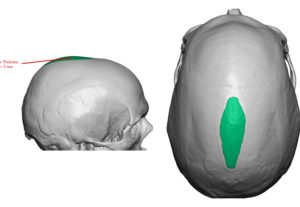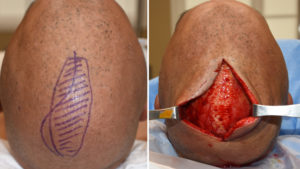Background: The shape of one’s skull is determined by numerous factors. But the most important two are the cranial sutures and the underlying expanding brain. The sutures permit the growing brain to increase in size without constriction by a tight overlying ‘bone box’. These sutures are strategically placed to allow a circumferential expansion of the skull while keeping the different pieces of the skull together.
One of the key and most evident cranial sutures is the one that runs down the midline of the skull and initially connects the front and back soft spots. This long suture allows the skull to grow in width. When the sagittal suture fuses together too soon a well known abnormal skull shape ensues marked by a lack of skull width and a very long skull length. (sagittal craniosynostosis)
There are different degrees or expressions of sagittal craniosynostosis, some of which may escape early surgical intervention or felt not severe enough to justify infantile cranial vault surgery. They present in adulthood with prominent sagittal ridges, narrow bitemporal widths and a triangular shape to the top of their head when viewed from the front. Skull reshaping of these deformities in adults requires a completely different surgical approach than what is used in infants.
Case Study: This 42 year-old male desired to change his skull shape. It had bothered him since his hair had thinned when he was younger and he had managed his head shape concerns by constantly kept his head covered by hats and caps. He had been through several unsuccessful hair restoration treatments including scalp reduction and scalp micropigmentation.
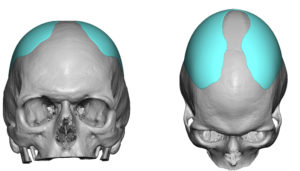
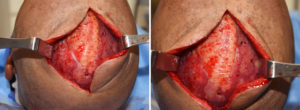
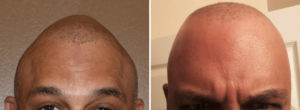
Adult skull reshaping of the sagittal ridge deformity always involves some reduction of the height of the ridge. But in more severe cases this alone is inadequate. Building up the skull around it essential and this is most effectively using a 3D design approach to the custom skull implant.
Highlights:
1) The prominent sagittal ridge skull deformity seen in an adult is caused by an untreated infantile sagittal craniosynostosis of varying expressions.
2) Reshaping the adult high sagittal ridge requires a combination of some sagittal ridge reduction and major parasagittal augmentation.
3) A custom skull implant is the most effective method for a major skull reshaping change.
Dr. Barry Eppley
Indianapolis, Indiana



